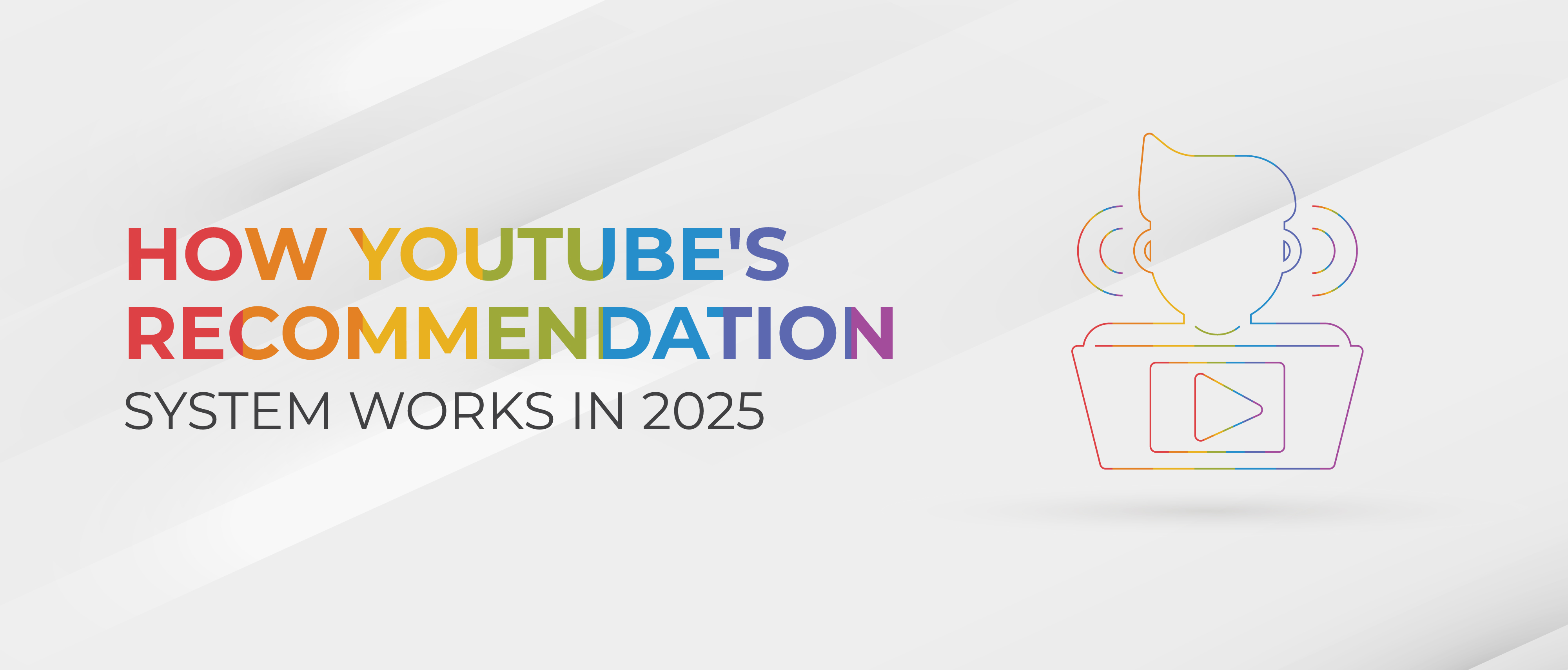
In 2025, the YouTube Algorithm is smarter, faster, and more intuitive than ever, shaping what billions of users watch daily. Gone are the days of simple view counts determining video success—now, AI-driven recommendations analyze everything from watch history and engagement signals to real-time trends and even emotional cues. Whether you're a creator aiming to crack the code or a viewer wondering why YouTube always seems to "read your mind," understanding how this powerful system works can unlock new opportunities and insights. So, what's driving YouTube's recommendations in 2025? Let's dive in.
In 2025, YouTube's algorithm continues to shape how content is discovered, prioritising personalisation and engagement. There are two primary ways users come across videos on the platform:
1. Recommended Content – Videos appear on a user's home page and in the YouTube recommendation system for the videos section.
2. Search Results – Videos are shown when users enter specific queries into YouTube's search bar or Google.
Like Instagram, YouTube utilizes different algorithms for these discovery methods, each driven by unique characteristics that determine a video's relevance, quality, and appeal. These signals help YouTube decide which content deserves more visibility and which viewers will likely engage with.
YouTube's Home page and Suggested Videos are powered by a recommendation system that priorities user behavior. Instead of relying solely on video popularity, the YouTube AI recommendations algorithm focuses on individual viewing patterns to deliver personalised content.
Several key signals influence which videos get recommended:
• Videos users watch frequently
• Videos they ignore or skip
• Search queries and interests
• Likes, dislikes, and engagement patterns
• Direct feedback, such as 'Not Interested' selections
By continuously analysing these factors, YouTube fine-tunes recommendations, ensuring each user's experience feels tailored and engaging.
YouTube's recommendation system determines which videos to suggest based on two key factors:
• Performance Metrics: The algorithm evaluates how engaging and satisfying your video is for viewers, considering factors like watch time, interaction rates, and audience retention.
• User Viewing Behavior: YouTube analyzes a user's watch and search history, including how frequently they engage with specific channels or topics and how often a particular video has been shown.
By combining these elements, YouTube content optimisation and recommendation system ensures that recommendations remain relevant, personalized, and engaging for each user.
YouTube personalisation videos appear alongside the video a user is currently watching, typically on the right side of the screen on a desktop or below the video on a mobile. The YouTube ranking factors are ranked to surface videos users will most likely watch next.
While many suggested videos are closely related to the current content, the algorithm also personalizes recommendations based on a user's watch history and preferences.
To enhance user control, YouTube offers filter buttons above the suggested video feed, allowing viewers to refine their recommendations. These filters include:
• From [Current Creator] – More videos from the same content creator.
• Related – Videos on similar topics or themes.
• Similar Artists – Alternative content from creators in the same niche.
• Recently Uploaded – The latest content relevant to the user's interests.
• Watched – Previously viewed videos for easy access.
Key Signals That Influence YouTube's Home Page & Suggested Videos Algorithm
o Engagement
YouTube engagement metrics play an important role in shaping what content users see. The platform monitors user interactions to determine which videos keep viewers engaged and support them to stay longer. Metrics like watch time, video views, likes, dislikes, and shares provide strong signals to the algorithm, influencing future recommendations.
o Feedback Surveys
From time to time, YouTube may ask users to provide feedback on a video through a quick survey. This input can influence the video's overall performance and determine how frequently it appears in recommendations and other feeds.
o Direct Feedback
YouTube doesn't just rely on behavioural cues—it also gives users direct control over their recommendations. Viewers can access various options that shape the content they see in their feeds by clicking the three vertical dots below a video.
Selecting actions like Add to Queue, Save to Watch Later, or Share signals to YouTube that the user enjoys this type of content and prompts the algorithm to recommend more from the same creator or similar channels.
On the other hand, choices like Not interested send a strong negative signal, significantly reducing the likelihood of seeing that creator or topic again in future recommendations. This allows users to fine-tune their YouTube experience based on their preferences.
As YouTube's recommendation system continues to evolve in 2025, it remains a dynamic force shaping content discovery, YouTube promotion, and user engagement. By leveraging AI-driven insights, real-time behavior tracking, and user feedback, the algorithm delivers highly personalised experiences tailored to each viewer's interests.
For creators, understanding these ranking signals—engagement, watch history, and direct feedback—can be the key to growing their audience and maximising their YouTube promotion efforts. As YouTube refines its system, the platform will continue to balance automation with user control, ensuring a smarter, more interactive, and immersive viewing experience for all.
Contact Us Today !!